Stanford Unveils the 2023 AI Index Focused on Key Trends and Progress in the Field.
In Brief
Stanford has rolled out an extensive 386-page report highlighting the latest trends and breakthroughs in the AI sector.
The findings indicate that Large Language Models are expanding at an astonishing rate, becoming significantly larger and more costly to train.
There is a noticeable uptick in job postings related to AI across nearly every sector in the United States.
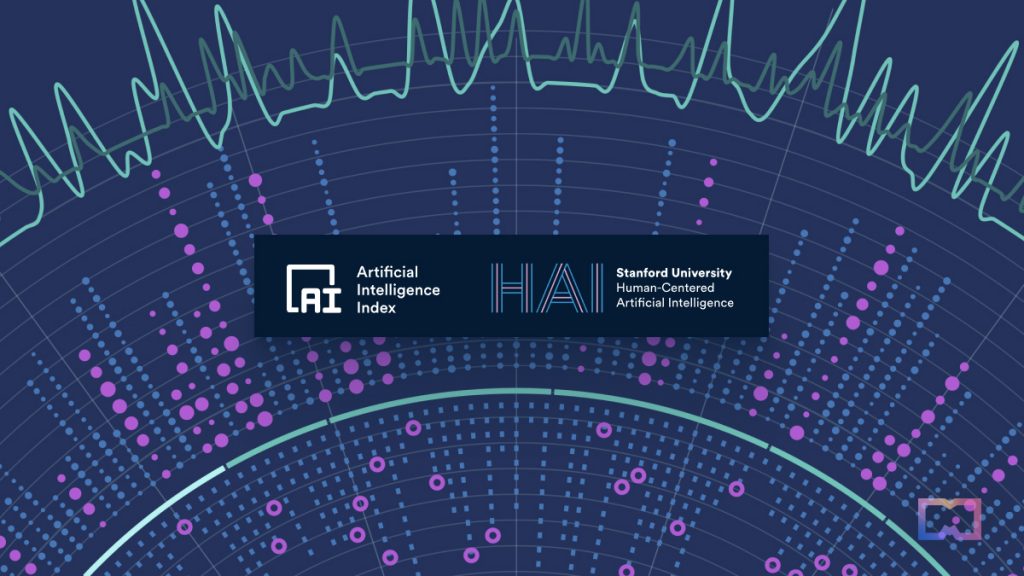
The Stanford Institute for Human-Centered Artificial Intelligence has produced a detailed 386-page report... AI report This publication sheds light on major trends and advancements in the AI world as of 2023, guiding leaders to embrace a human-centric approach in promoting AI ethically and responsibly.
To monitor the advancements in artificial intelligence, an interdisciplinary team from Stanford’s AI Index Steering Committee collaborated with various institutions, including Georgetown University’s Center for Security and Emerging Technology, LinkedIn, NetBase Quid, Lightcast, and McKinsey.
Key takeaways
Featuring eight chapters that address various aspects such as research and development, technical performance, AI ethics, economic implications, educational matters, governance, diversity, and public sentiment, the report includes several pivotal insights:
- Industry has taken over academia
Academic institutions primarily drove the development of notable machine learning models up until 2014, but since that time, the industry has surged forward, unveiling 32 significant machine learning models, while academia has produced only three. This shift is attributed to the vast resources pertaining to data, computational power, and funding that industry players can leverage for machine learning advancements.
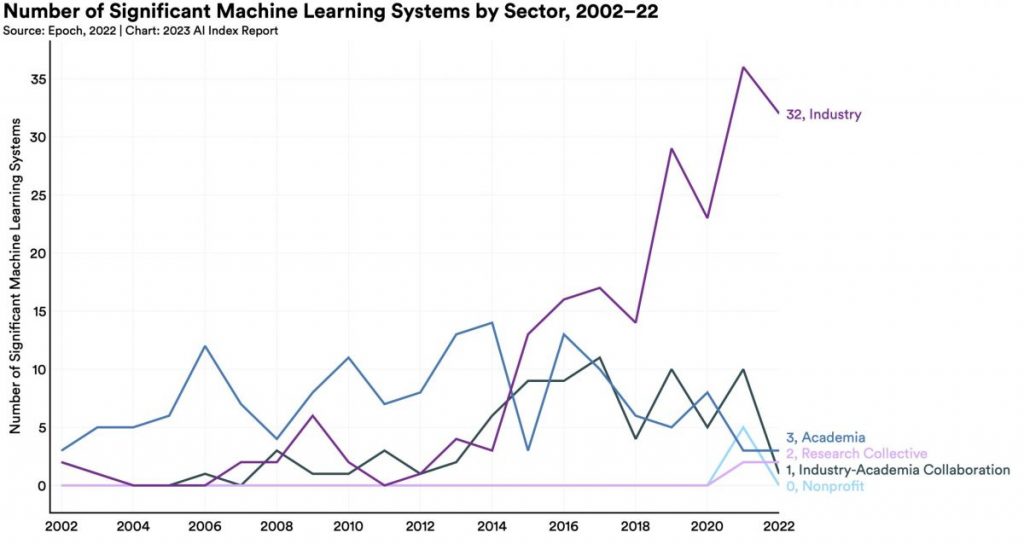
- The evolution of AI models is accelerating, with an accompanying rise in training costs.
When it was launched in 2019, GPT-2 was hailed as the pioneer among large language models (LLMs) with 1.5 billion parameters, costing approximately $50,000 to train. By contrast, PaLM, introduced in 2022, featured an incredible 540 billion parameters and a training cost nearing $8 million—making it roughly 360 times more substantial and 160 times more expensive than GPT-2. This trend illustrates how LLMs are skyrocketing both in size and cost across the board. multimodal models Estimated Training Expenses for Select Large Language and Multimodal Models

- In 2022, global private investment in AI reached $91.9 billion, marking a 26.7% drop from 2021. Of this, $47.4 billion originated from the United States and $13.4 billion from China. However, it's worth noting that AI funding overall has experienced significant growth in the last ten years, being 18 times higher in 2022 compared to 2013.
Increasing numbers of businesses are embracing AI, and job opportunities related to AI are on the rise across all sectors in the U.S.
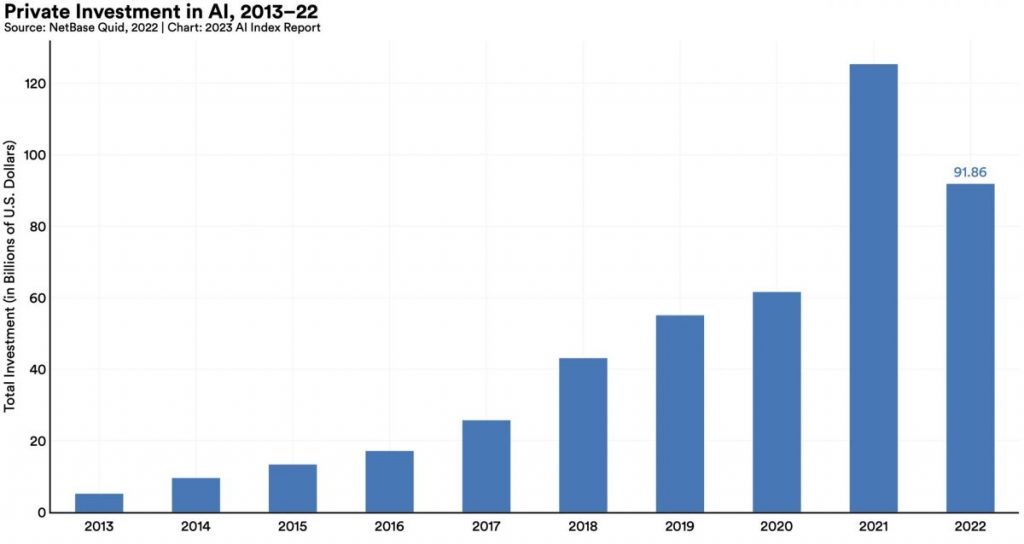
- The proportion of enterprises integrating AI more than doubled between 2017 and 2022. Firms employing AI reported reductions in costs alongside boosts in revenue. Despite concerns regarding job security, the statistics show a rise in AI job postings across American sectors, climbing from an average of 1.7% in 2021 to 1.9% in 2022.
Impact on Costs and Revenue Following AI Implementation by Function jobs replaced by AI As AI continues to advance, incidents of its misuse are escalating. An analysis of records from 81 nations indicates that references to AI in legislative discussions have surged nearly 6.5 times since 2016. The AIAAIC database, which tracks unethical AI applications, documented a staggering 26-fold rise in AI-related controversies since 2012. Notable events in 2022 included a manipulated video involving Ukrainian President Volodymyr Zelensky and the employment of call-monitoring technology by U.S. correctional facilities to surveil inmates.
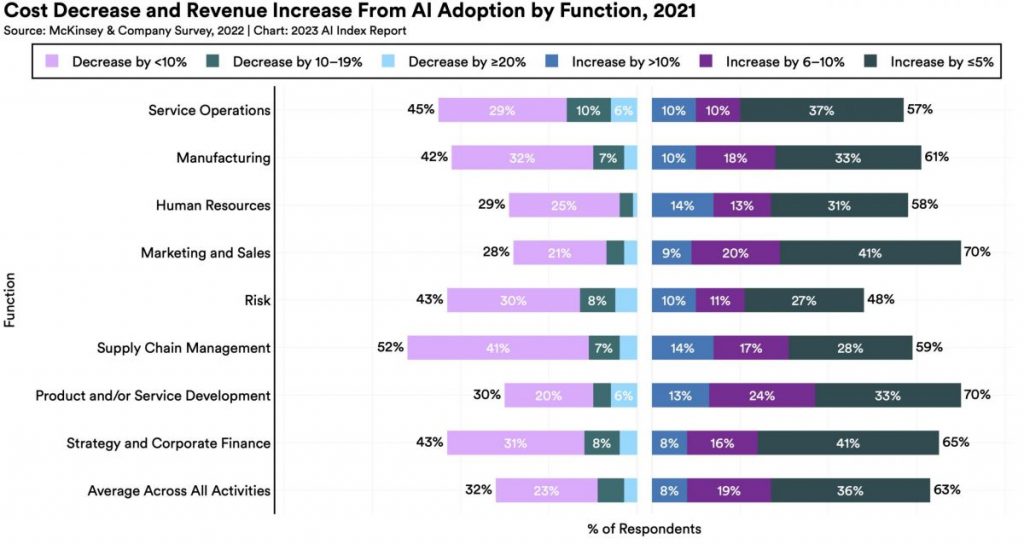
- Policymaker interest in AI regulation AI systems could pose significant environmental risks. deepfake Research by Luccioni et al. (2022) revealed that the training of BLOOM emitted 25 times more carbon than an individual would produce on a direct flight from New York to San Francisco. In a positive twist, emerging reinforcement learning models like BCOOLER demonstrate that AI systems can streamline energy consumption.
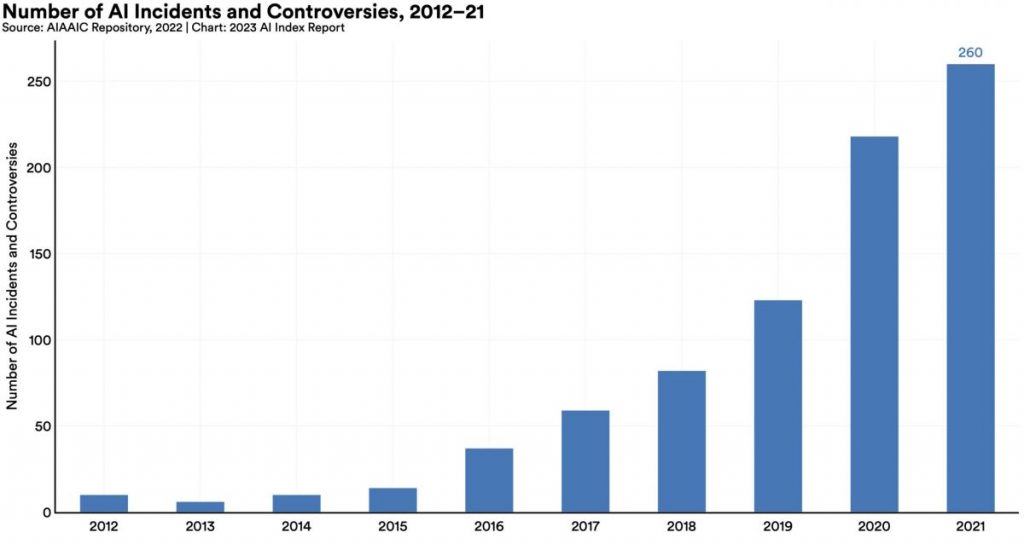
- In addition to these key insights, the report delves into numerous other areas associated with foundational models, encompassing geopolitics, training costs, environmental repercussions, K-12 AI education, and much more.
The insights presented only skim the surface of the critical challenges and emerging trends within the AI sector. Those eager to explore any specific subject in more detail are encouraged to delve deeper.
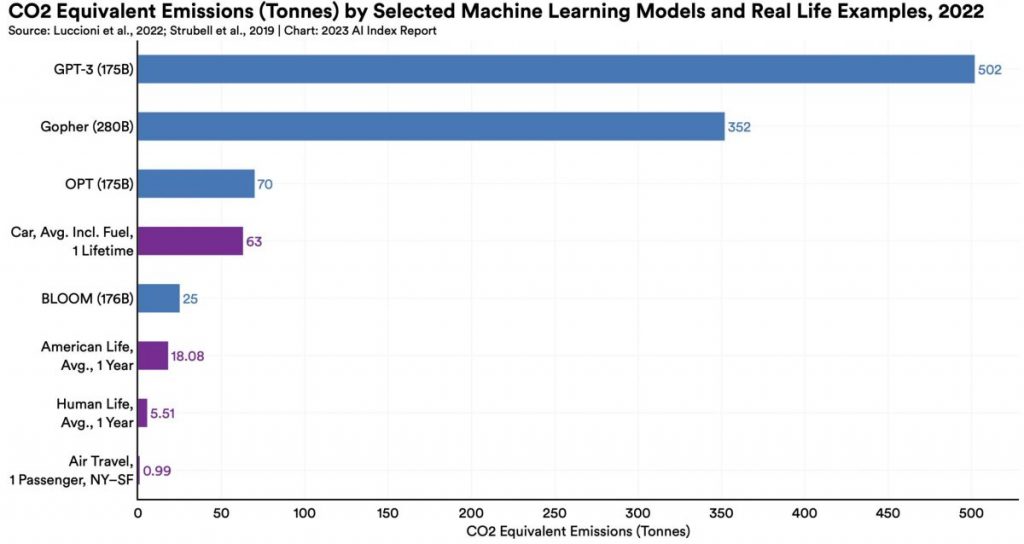
Conclusion
OpenSea has made strides: reduced fees and enhanced security measures. public opinion trends in AI, and much more.
November’s Metaverse Fundraising Report: Trends in Infrastructure, Gaming, and NFTs. download the full report .
Read more:
Disclaimer
In line with the Trust Project guidelines Jupiter DAO Introduces the ‘Next Two Years: DAO Resolution’ Proposal, Aiming for Progressive Independence and Elevated Funding.







